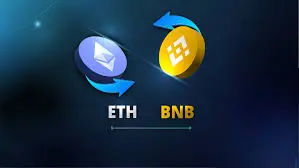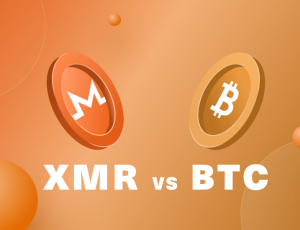Introduction
In the rapidly evolving world of cryptocurrencies, Ethereum and Matic (now known as Polygon) have emerged as prominent players in the decentralized finance (DeFi) and blockchain ecosystems. As the demand for faster and more scalable blockchain solutions grows, many users may find themselves wanting to exchange their Ether (ETH) for Matic (MATIC) tokens. In this comprehensive guide, we will discuss the process of swapping Ether for Matic, exploring the various platforms and methods available, as well as important factors to consider before trading and tips for managing risk.
Understanding Ethereum and Matic
Before delving into the process of exchanging Ether for Matic, it is essential to understand the basics of Ethereum and Matic and their respective roles in the blockchain and DeFi ecosystems.
Ethereum is a decentralized, open-source blockchain platform that supports smart contracts and is the foundation for numerous decentralized applications (dApps) and cryptocurrencies, including its native currency, Ether (ETH). Ethereum is the second-largest cryptocurrency by market capitalization and is widely used for DeFi projects, non-fungible tokens (NFTs), and initial coin offerings (ICOs).
Matic, rebranded as Polygon, is a Layer 2 scaling solution for Ethereum that aims to provide faster and cheaper transactions by leveraging its Proof-of-Stake (PoS) consensus mechanism and sidechains. The Matic token (MATIC) is the native cryptocurrency of the Polygon network and is used for various purposes, such as staking, governance, and paying transaction fees.
Factors to Consider Before Exchanging Ether to Matic
Prior to exchanging Ether for Matic, it is important to consider several factors that can influence your decision and the success of your trade:
- Market Analysis: Conduct thorough research on the current state of the cryptocurrency market, including trends, sentiment, and the performance of Ether and Matic relative to other digital assets.
- Trading Strategy: Determine your trading strategy and objectives, such as short-term speculation, long-term investment, or diversifying your cryptocurrency portfolio.
- Risk Tolerance: Assess your appetite for risk, as trading cryptocurrencies can be highly volatile and subject to sudden price fluctuations.
- Fees and Exchange Rates: Compare the fees and exchange rates offered by various platforms to ensure that you receive the best possible value for your trade.
Methods and Platforms for Exchanging Ether to Matic
There are several methods and platforms available for swapping Ether for Matic, including centralized exchanges, decentralized exchanges (DEXs), and swap services. Each method has its own advantages and disadvantages, which should be considered before making a trade.
-
Centralized Exchanges
Centralized exchanges are the most common method for exchanging cryptocurrencies, as they offer a user-friendly interface and a wide range of trading pairs. Some popular centralized exchanges that support Ether and Matic trading include:
- Binance
- Coinbase Pro
- Kraken
- Huobi Global
When selecting a centralized exchange, consider factors such as trading fees, security measures, and the available payment methods for depositing and withdrawing funds.
-
Decentralized Exchanges (DEXs)
Decentralized exchanges (DEXs) are an alternative method for exchanging Ether for Matic. These platforms facilitate peer-to-peer trading without a central authority or intermediary, offering increased privacy and control over your transactions. Some popular DEXs for swapping Ether for Matic include:
- Uniswap
- SushiSwap
- 1inch
- QuickSwap
When choosing a DEX, consider factors such as user experience, liquidity, and supported cryptocurrencies.
-
Swap Services
Swap services provide a convenient and straightforward way to exchange Ether for Matic without the need for an account or extensive trading experience. These services operate as intermediaries between users and multiple liquidity sources, offering competitive exchange rates and simplified transactions. Some popular swap services for exchanging Ether for Matic include:
- ChangeNOW
- SimpleSwap
- StealthEX
When selecting a swap service, consider factors such as fees, exchange rates, transaction speed, and supported cryptocurrencies.
Step-by-Step Guide to Exchanging Ether for Matic
Now that you’re familiar with the methods and platforms available for swapping Ether for Matic, let’s walk through the step-by-step process of exchanging ETH for MATIC:
- Choose a Platform: Select a centralized exchange, decentralized exchange, or swap service that supports Ether and Matic trading and meets your requirements in terms of fees, security, and user experience.
- Deposit Ether: If you’re using a centralized exchange, you’ll need to create an account and deposit Ether into your wallet on the chosen platform. This can typically be done by transferring Ether from another wallet or exchange. If you’re using a DEX or swap service, you can connect your Ethereum wallet directly to the platform.
- Exchange Ether for Matic: Navigate to the trading interface on your chosen platform and select the appropriate trading pair (e.g., ETH/MATIC). Enter the amount of Ether you wish to exchange for Matic and execute the trade. For DEXs and swap services, the process usually involves approving the transaction using your connected wallet.
- Withdraw and Store Your Matic: After exchanging Ether for Matic, it is recommended to withdraw your MATIC to a secure wallet to maintain control over your assets and minimize the risk of potential hacks or platform failures.
Choosing a Wallet for Storing Matic
Storing your Matic securely is an essential aspect of managing your digital assets. There are various types of wallets available for storing MATIC, including:
- Hardware Wallets: Hardware wallets, such as the Ledger Nano S or the Trezor One, are physical devices that securely store your private keys offline. These wallets are considered one of the safest options for storing cryptocurrencies, as they are immune to hacking and malware attacks.
- Software Wallets: Software wallets are applications that store your Matic on your computer or mobile device. Some popular software wallets that support Matic include Metamask, Trust Wallet, and Coinomi.
- Web Wallets: Web wallets are browser-based wallets that store your Matic online, providing convenient access to your assets from any device with an internet connection. However, they are generally considered less secure than hardware and software wallets due to their vulnerability to hacking and phishing attacks.
When selecting a wallet, consider factors such as security, ease of use, and compatibility with your chosen platform and other cryptocurrencies.
Risk Management and Diversification
Trading cryptocurrencies, including exchanging Ether for Matic, carries inherent risks due to the volatile nature of the market. As such, it is vital to employ risk management strategies and diversify your investment portfolio to mitigate potential losses.
Some tips for managing risk and diversifying your portfolio include:
- Dollar-Cost Averaging: Dollar-cost averaging (DCA) is a strategy that involves investing a fixed amount of money in Matic at regular intervals, regardless of its price. This approach can help reduce the impact of market volatility and spread your investment over time.
- Portfolio Diversification: Allocate your investments across various digital assets and traditional financial instruments, such as stocks, bonds, and real estate, to create a balanced and diversified portfolio.
- Establish Exit Strategies: Set clear profit targets and stop-loss orders to manage your investments and minimize potential losses.
Conclusion
Exchanging Ether for Matic can be an exciting and potentially rewarding endeavor for those interested in exploring the world of digital currencies and the evolving blockchain ecosystem. By understanding Ethereum and Matic’s unique features, considering the factors that can influence your investment, and familiarizing yourself with the various methods and platforms available for trading, you can make informed decisions and navigate the market with confidence.
Additionally, it is crucial to prioritize the secure storage of your Matic in a suitable wallet and employ risk management strategies to protect your investment. By adopting these principles and staying informed about the latest developments in the cryptocurrency space, you can maximize the potential returns on your Matic investment while minimizing risks.
As the demand for faster, more efficient, and scalable blockchain solutions continues to grow, Matic’s role in the Ethereum ecosystem positions it as an attractive option for investors and traders alike. By following this comprehensive guide and staying informed about the latest trends and developments, you can take advantage of the opportunities presented by Matic and the broader cryptocurrency market.




